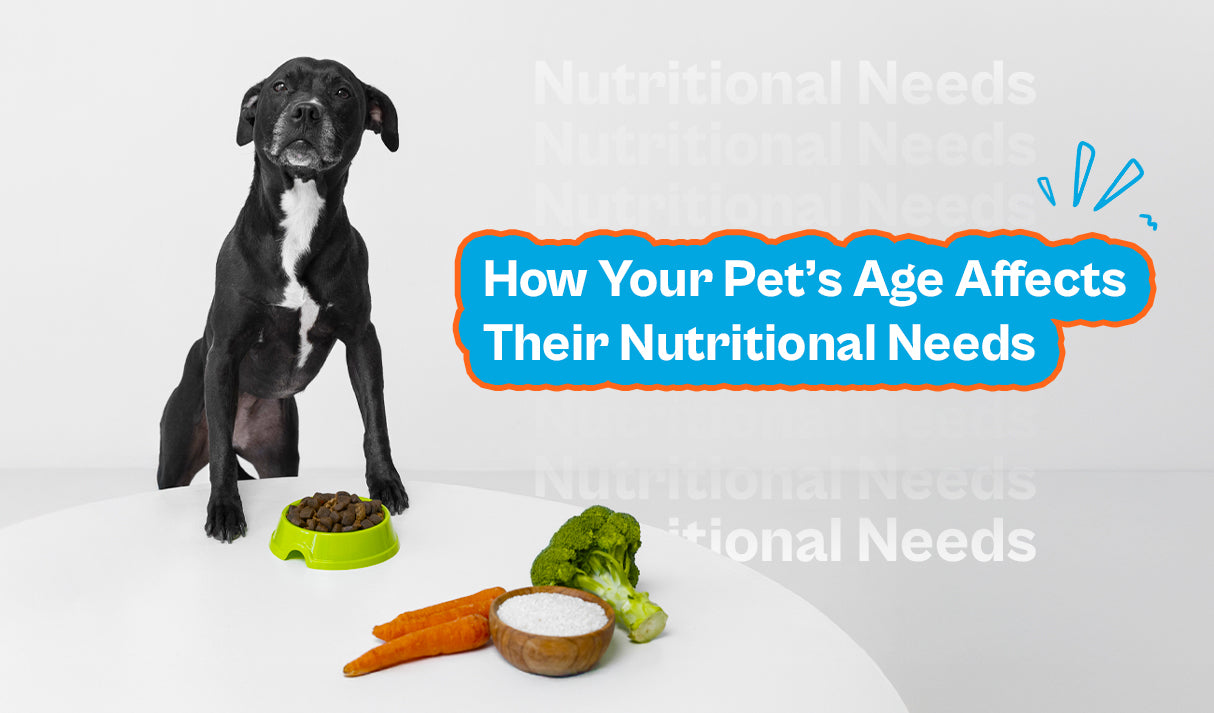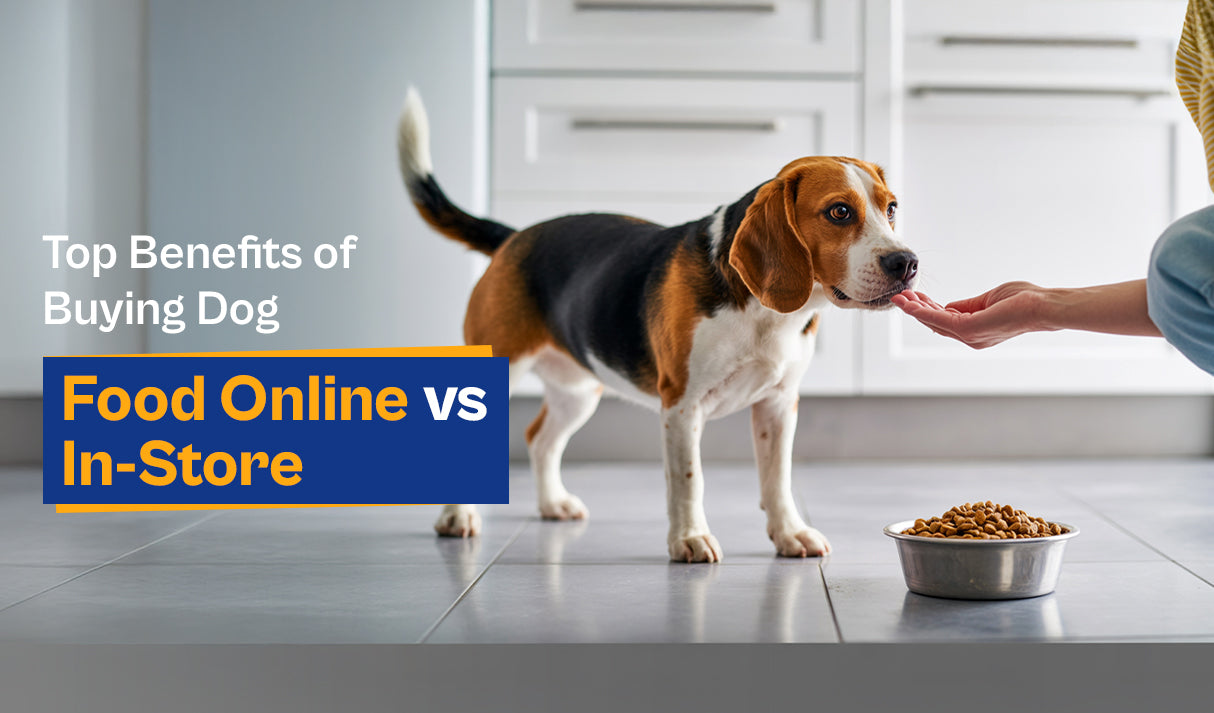How Your Pet’s Age Affects Their Nutritional Needs

When I first brought home my Labrador, Bruno, I thought feeding him would be simple, just pour the food into the bowl and call it a day. At eight weeks old, he devoured his meals with the kind of excitement usually reserved for pizza delivery. But as the years went by, something shifted. His energy levels changed, his stomach got pickier, and his once gleaming coat started to dull. Suddenly, the same food that had him zooming around the living room just didn’t seem to cut it.
That’s when I realised, dogs, just like humans, have evolving dietary needs. And what works for a bouncy pup doesn’t always serve a greying muzzle.
Understanding how age influences your pet’s nutritional requirements is one of the most important steps in being a responsible, caring pet parent. So, whether you’ve got a mischievous puppy, an energetic adult, or a wise old friend who prefers naps over fetch, here’s what you need to know.
The Puppy Stage: All Systems Go
Puppies grow fast. In just a few months, they double or even triple their size. This kind of rapid growth demands more than just calories, it calls for balanced, nutrient-rich food that supports every part of their developing body.
Here’s what to look for in puppy food:
-
High protein content to support muscle growth
-
DHA and EPA for brain and vision development
-
Calcium and phosphorus for strong bones and teeth
-
Smaller kibble size for easy chewing
When comparing puppy vs adult dog food, the key difference is concentration. Puppy food is more calorie-dense and tailored for growing bodies. Feeding adult food to a puppy too early may result in nutritional gaps that affect growth and development.
If you're unsure where to start, go for premium dog food designed specifically for puppies, it’s typically made with better quality ingredients and avoids artificial additives that can irritate a young, sensitive gut.
Adult Dogs: Maintenance Mode
By the time your dog turns one (or around 12–14 months for larger breeds), they’ve officially entered adulthood. This is when their nutritional needs stabilise, but that doesn’t mean they’re simple.
Adult dogs need food that helps them:
-
Maintain a healthy weight
-
Support energy without overfeeding
-
Sustain muscle health
-
Keep skin, coat, and digestion in top form
Too many calories can lead to weight gain, which is one of the biggest health issues in adult dogs. A well-balanced adult formula has the right mix of protein, fat, and fibre, and the best ones also include added vitamins and prebiotics for digestive support.
Transitioning from puppy to adult food should be done gradually to avoid stomach upsets. Choose a recipe with ingredients that mirror your dog’s energy level, breed size, and any special sensitivities.
The Senior Years: Less Sprint, More Support
Here’s the thing about older dogs, they may move a little slower, but their bodies are still doing a lot of work behind the scenes. As they age, metabolism slows, muscle mass reduces, and joints often begin to stiffen. That’s why pet food for senior dogs needs a different kind of care.
Senior dogs benefit from:
-
Lower calorie content to prevent weight gain
-
Higher fibre to aid digestion
-
Glucosamine and chondroitin to support joint health
-
Antioxidants to strengthen the immune system
-
Easily digestible proteins that are gentle on aging stomachs
If your dog is showing signs of fatigue, dull coat, or changes in appetite, their food could be the missing link. The best food for older dogs doesn’t just fill their bowl, it supports their quality of life, keeping them comfortable, active, and emotionally balanced.
Why Age-Specific Food Really Matters
It’s easy to assume that all dog food does the same job, but when you look closely at puppy vs adult dog food, or compare adult to senior formulas, the differences are clear.
Let’s break it down:
|
Life Stage |
Nutritional Priority |
What to Feed |
|
Puppy |
Growth, brain, and bone development |
High-calorie, nutrient-dense puppy formula |
|
Adult |
Weight control, energy balance, muscle maintenance |
Complete adult food with moderate protein and fat |
|
Senior |
Joint care, digestion, immunity |
Low-calorie, antioxidant-rich senior food with joint supplements |
Each stage is a building block. Feed the wrong formula at the wrong time, and you may unintentionally cause digestive issues, nutrient imbalances, or even long-term health concerns.
Choosing the Right Food: Not All Labels Are Equal
With hundreds of bags and brands out there, finding the right formula can feel overwhelming. That’s why trusting a reputable Pet food company matters. A good brand is transparent about its ingredients, doesn’t hide behind vague terms, and prioritises nutritional science over gimmicks.
What to look for:
-
Named proteins (e.g., chicken, lamb, salmon, not “meat meal”)
-
Whole ingredients like oats, brown rice, sweet potato
-
No artificial preservatives, colours, or mystery “flavours”
-
Formulated for your dog’s life stage with clear feeding guidelines
Better food means better digestion, better energy, and fewer vet visits down the line. It’s not just about what goes in the bowl, it’s about what stays with your dog as they age.
Transitioning Between Life Stages
Your dog won’t wake up one day and say, “I feel like a senior now.” Transitions happen gradually, and your food choices should too.
Here’s how to switch safely:
-
Transition slowly over 7–10 days by mixing the new food with the old, increasing the ratio each day.
-
Monitor for signs of stomach upset (loose stools, vomiting, or loss of appetite).
-
Adjust portion size based on your dog’s activity level and weight goals.
Pro tip: Always talk to your vet before switching diets, especially for seniors or dogs with health conditions.
Premium Food for Every Age: Is It Worth It?
In one word? Yes.
Premium dog food tends to be:
-
More digestible (meaning better nutrient absorption and less mess)
-
Richer in whole ingredients
-
Free from unnecessary fillers and additives
-
Backed by research and nutritional expertise
It’s the difference between feeding your dog and nourishing them.
Take Hunger Tail’s Adult Achiever – Chicken & Brown Rice formula, for example. It’s packed with lean protein, healthy grains, and gut-friendly fibre, perfect for active adult dogs who need balanced support. For older dogs, a gentle, antioxidant-rich option like Hunger Tail’s Senior Supreme – Chicken & Pumpkin brings relief to aging joints and tummies without compromising on taste or nutrition.
Final Thoughts: Let Their Bowl Grow with Them
As your dog moves from floppy-eared puppyhood to mellow maturity, their body, energy, and needs evolve. Your approach to food should too.
Choosing the right food for each stage isn’t just a health decision, it’s a way to honour your pet’s journey. Whether it’s tail-wagging excitement over dinner as a pup or gentle satisfaction as a senior, the right bowl of food is one of the most loving things you can offer.
Looking for a reliable, transparent, and nourishing option at every life stage? Visit Hunger Tail and explore premium recipes tailored to your dog’s age, size, and lifestyle.
Because every chapter of their life deserves the very best.



